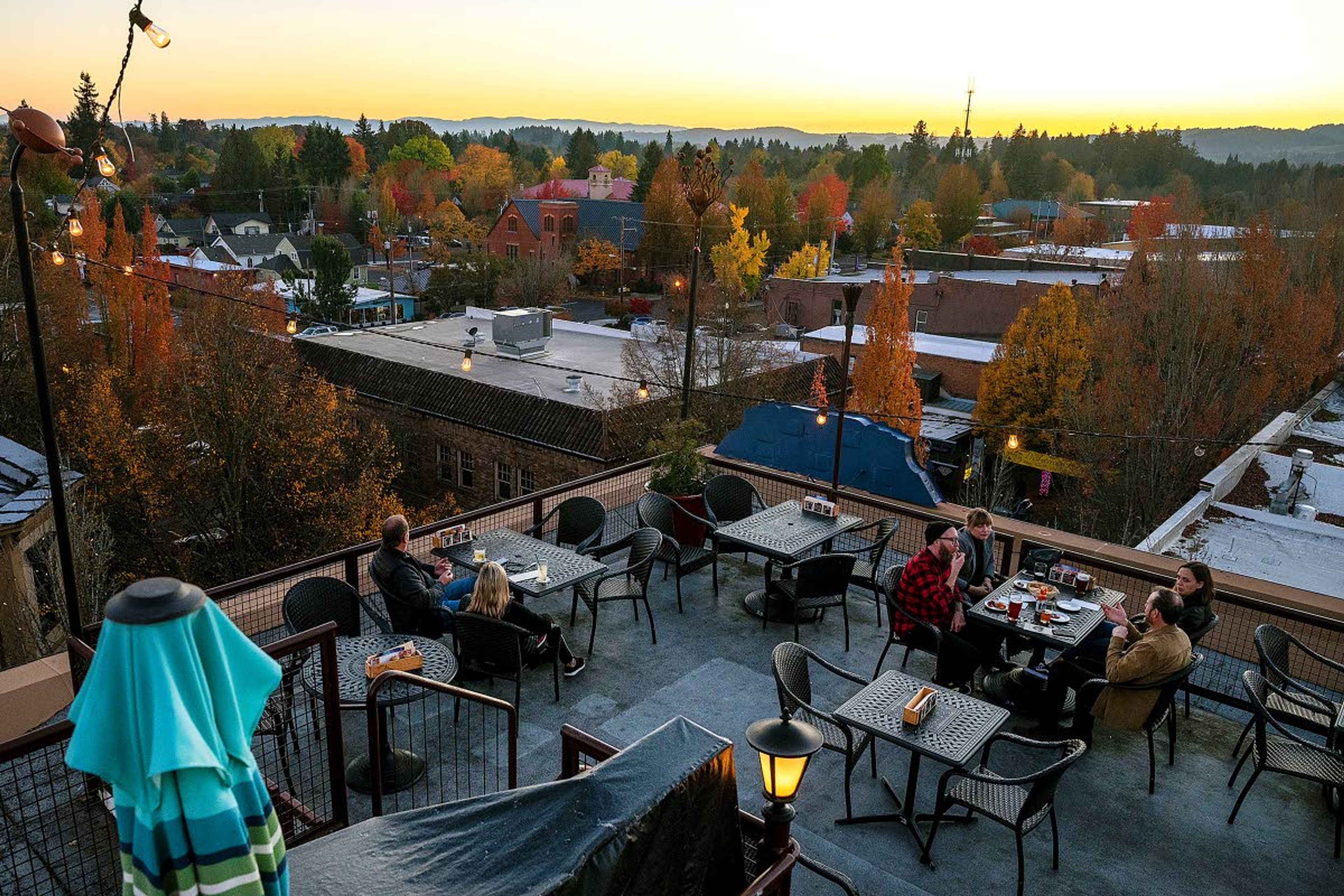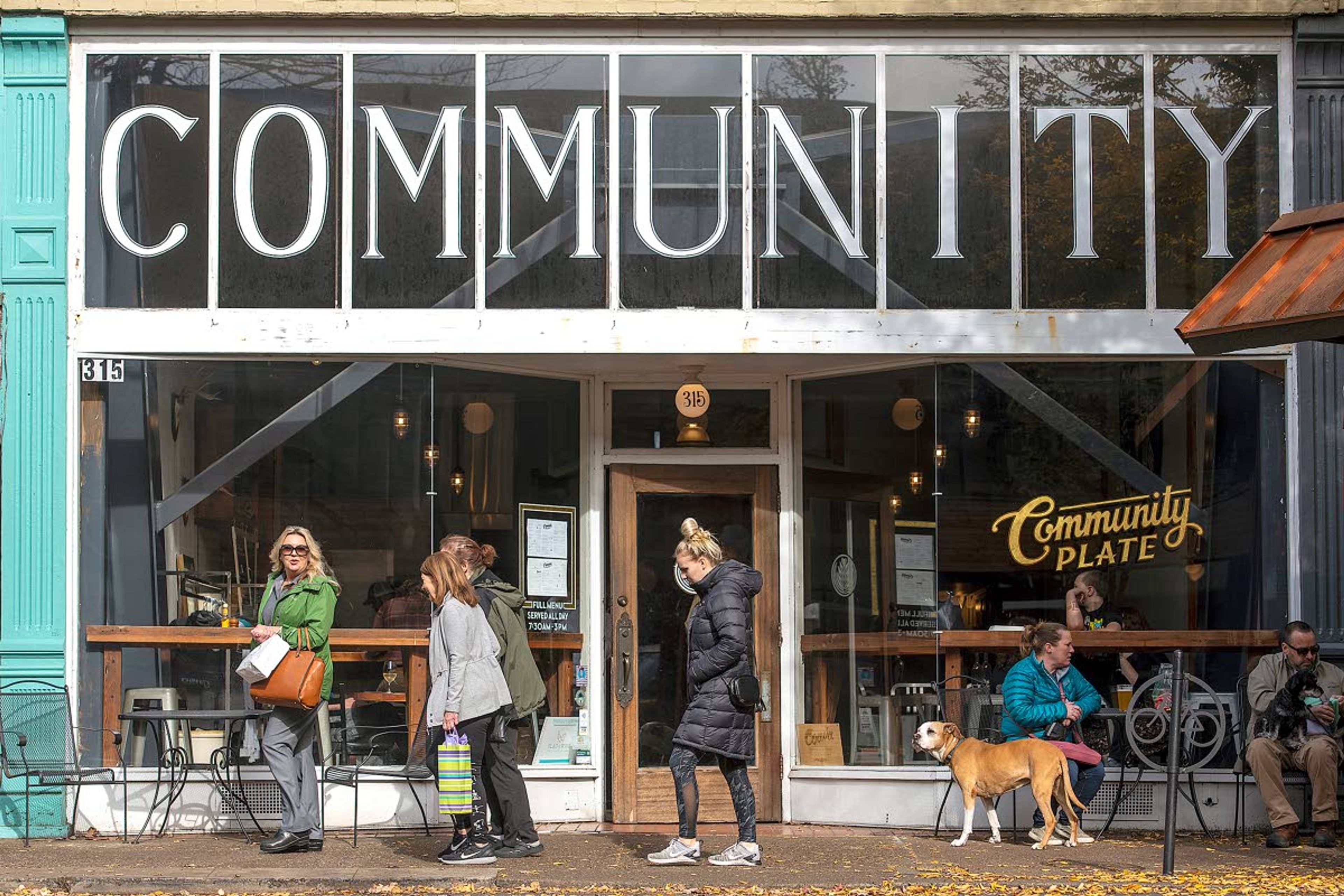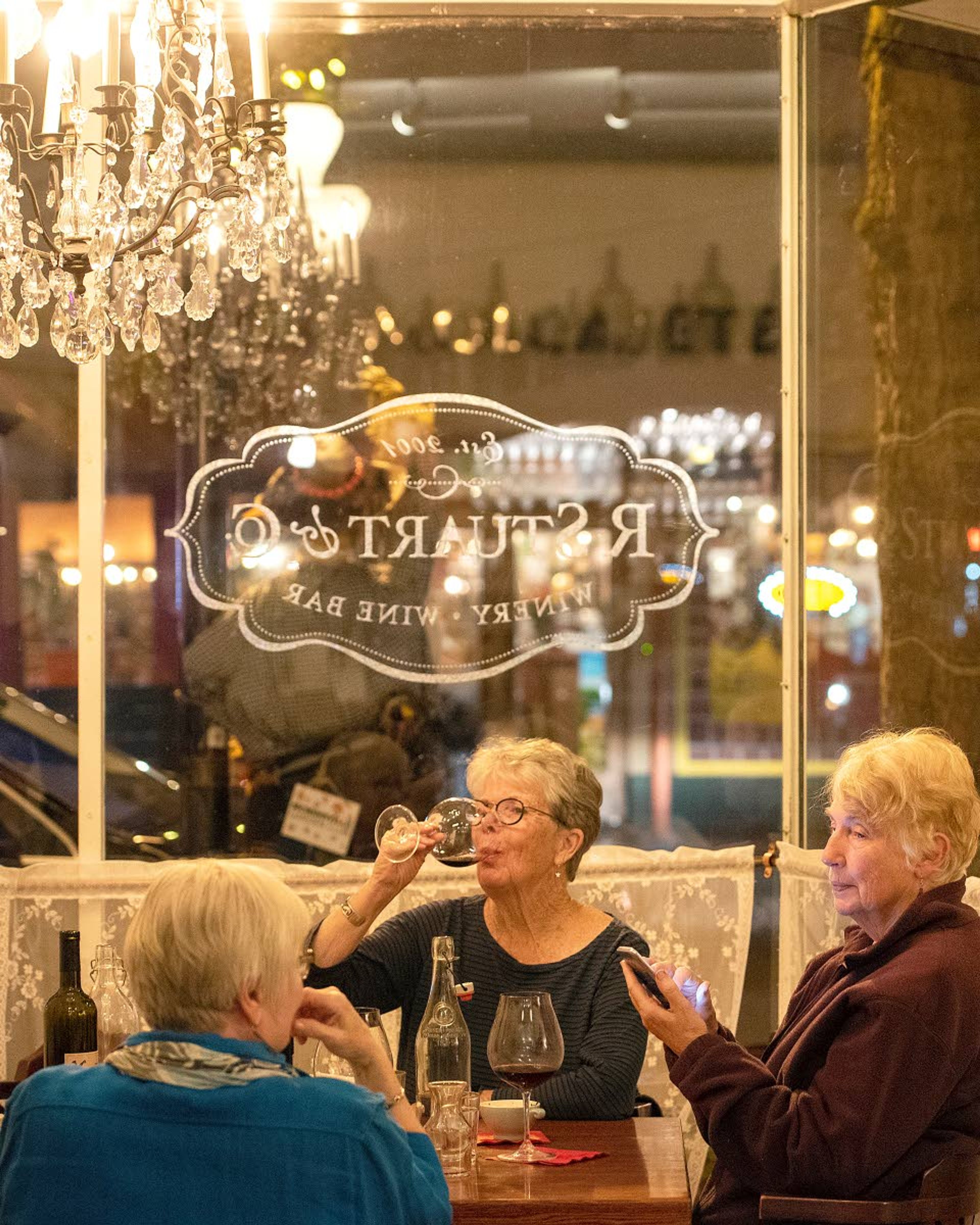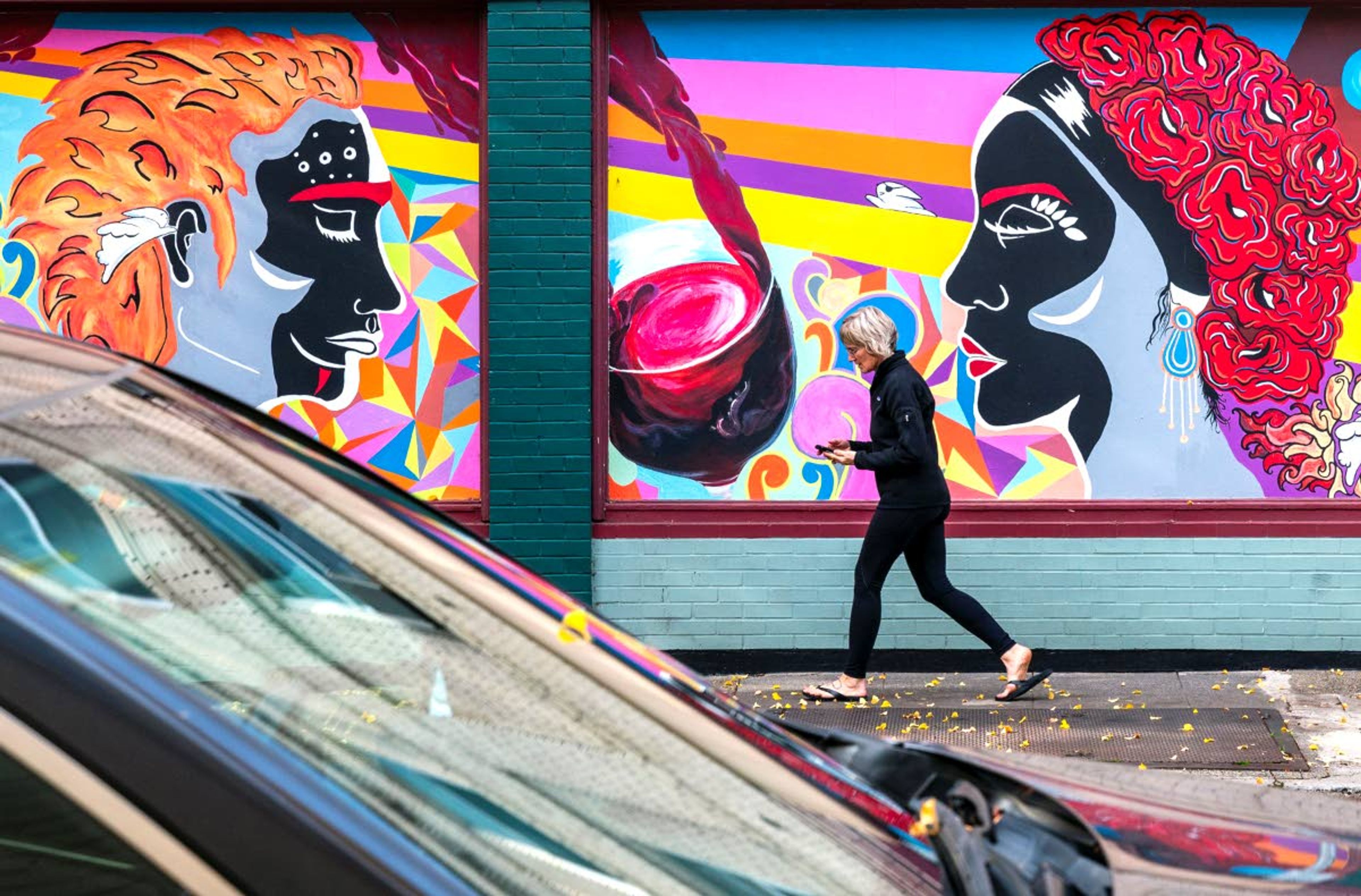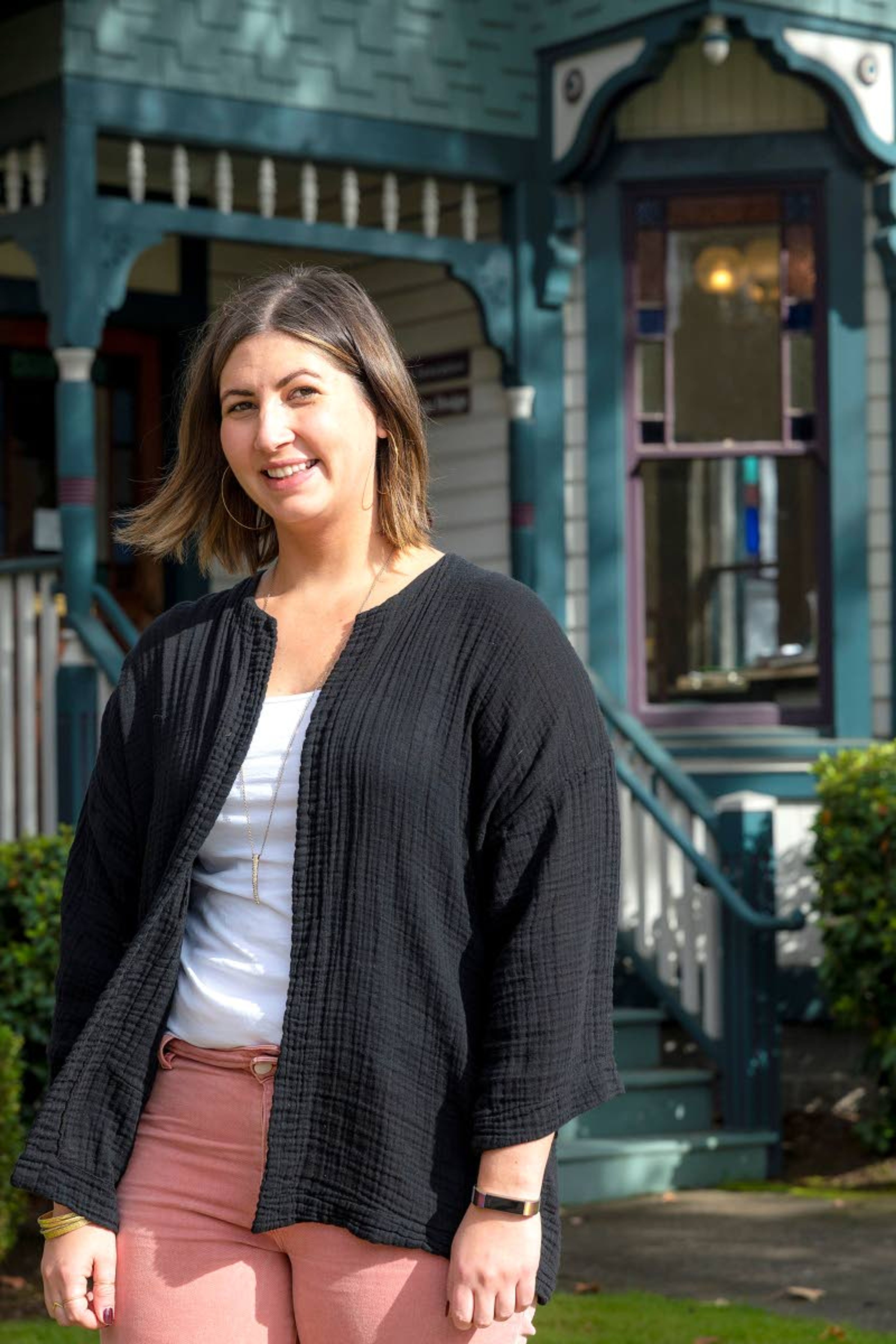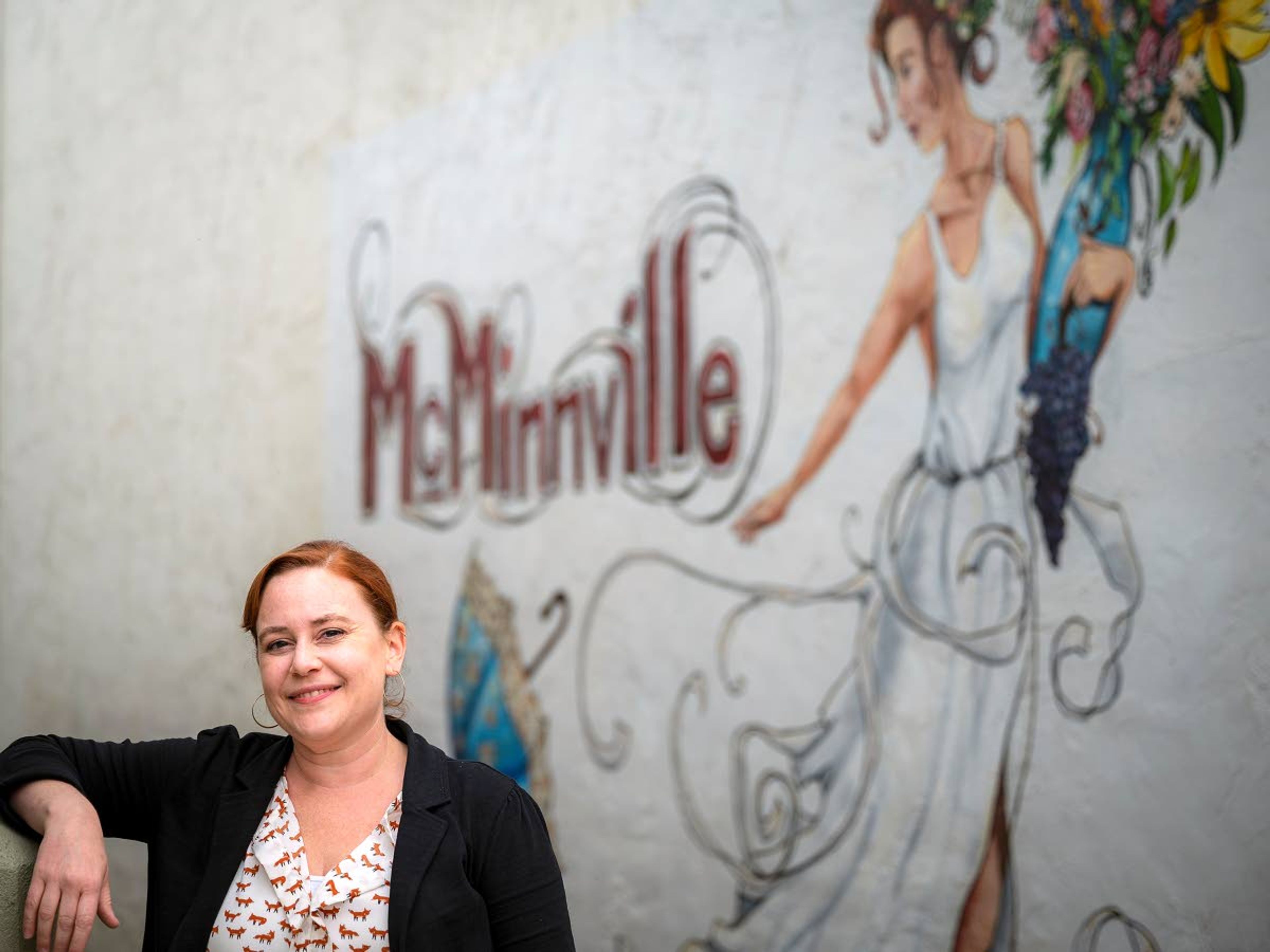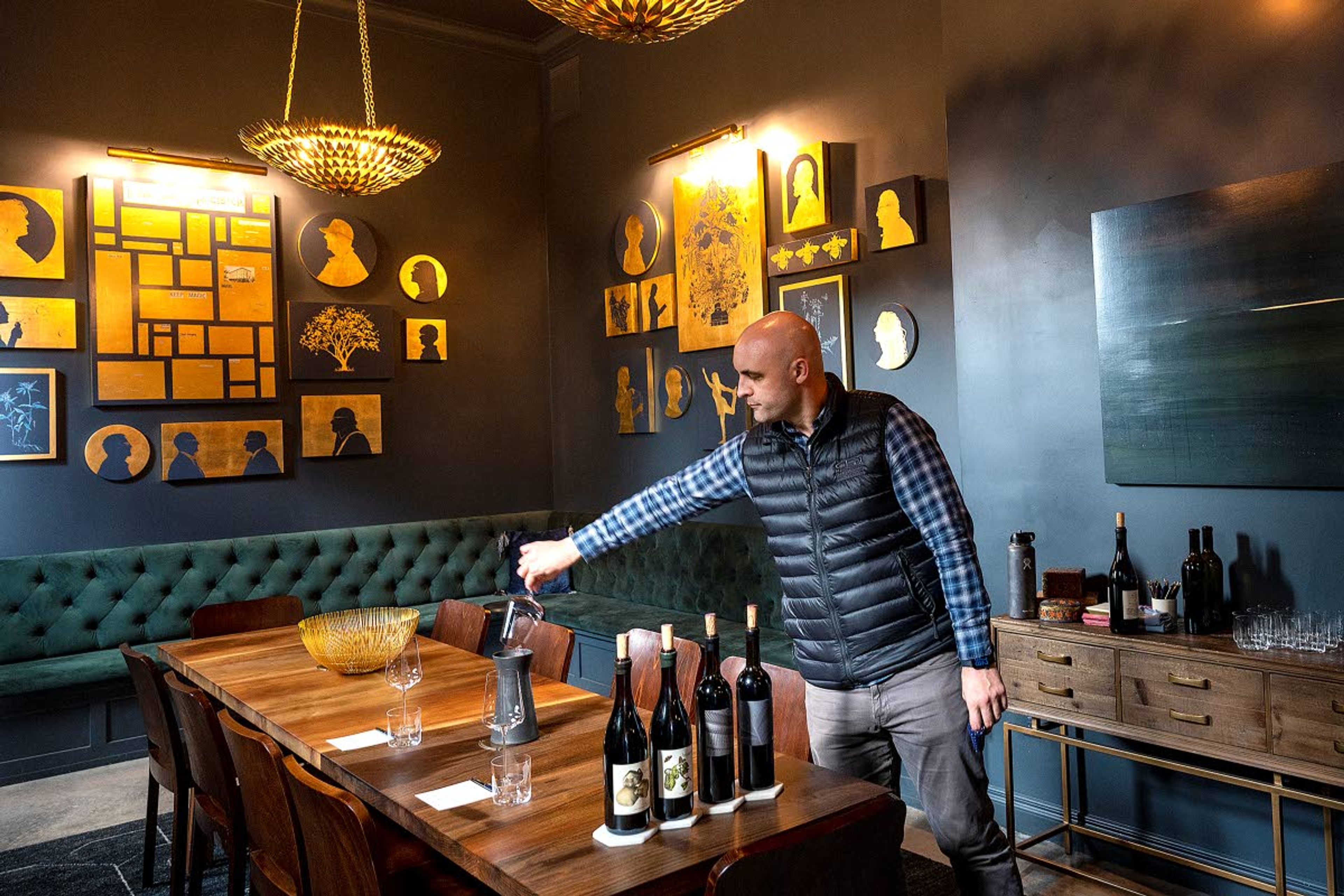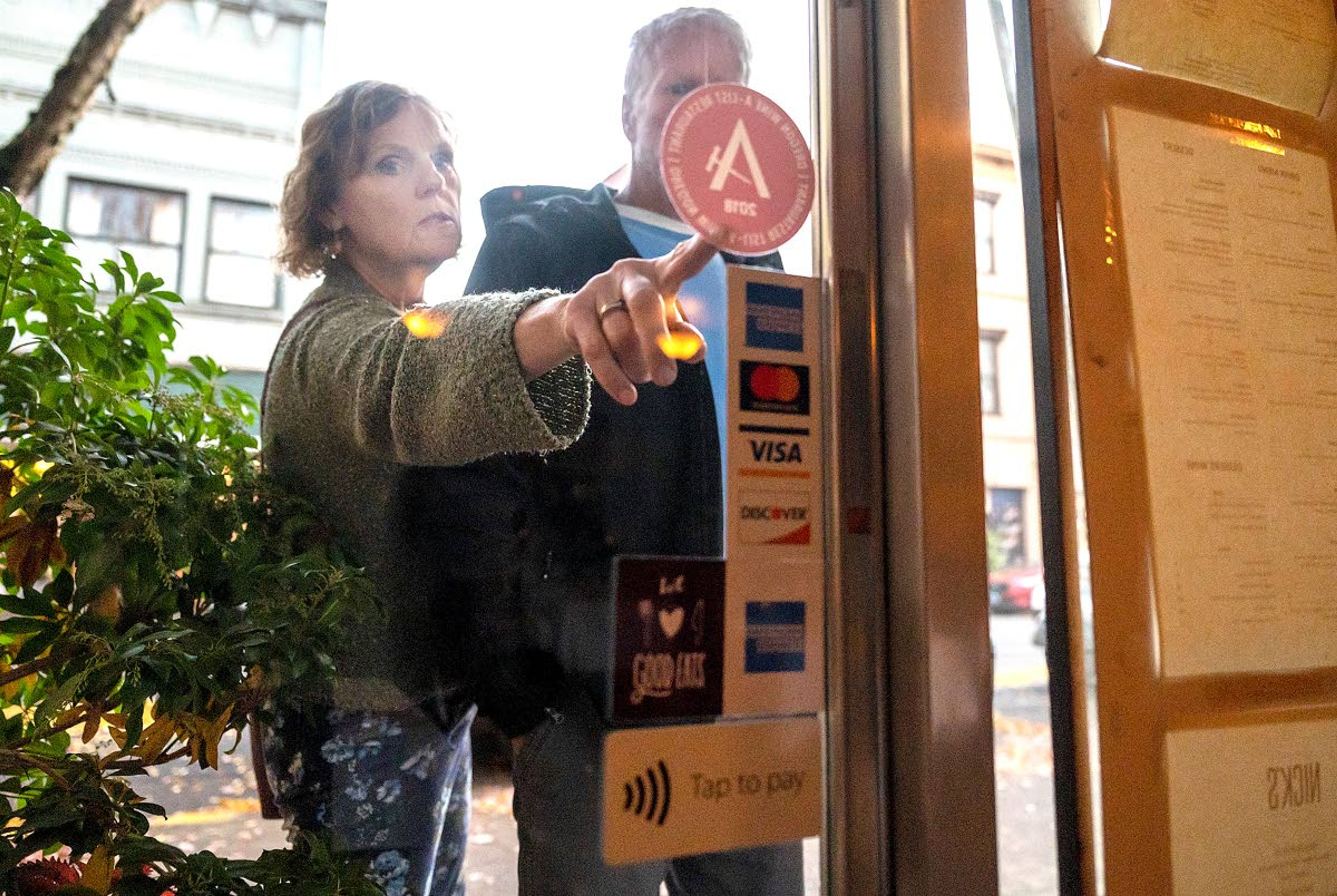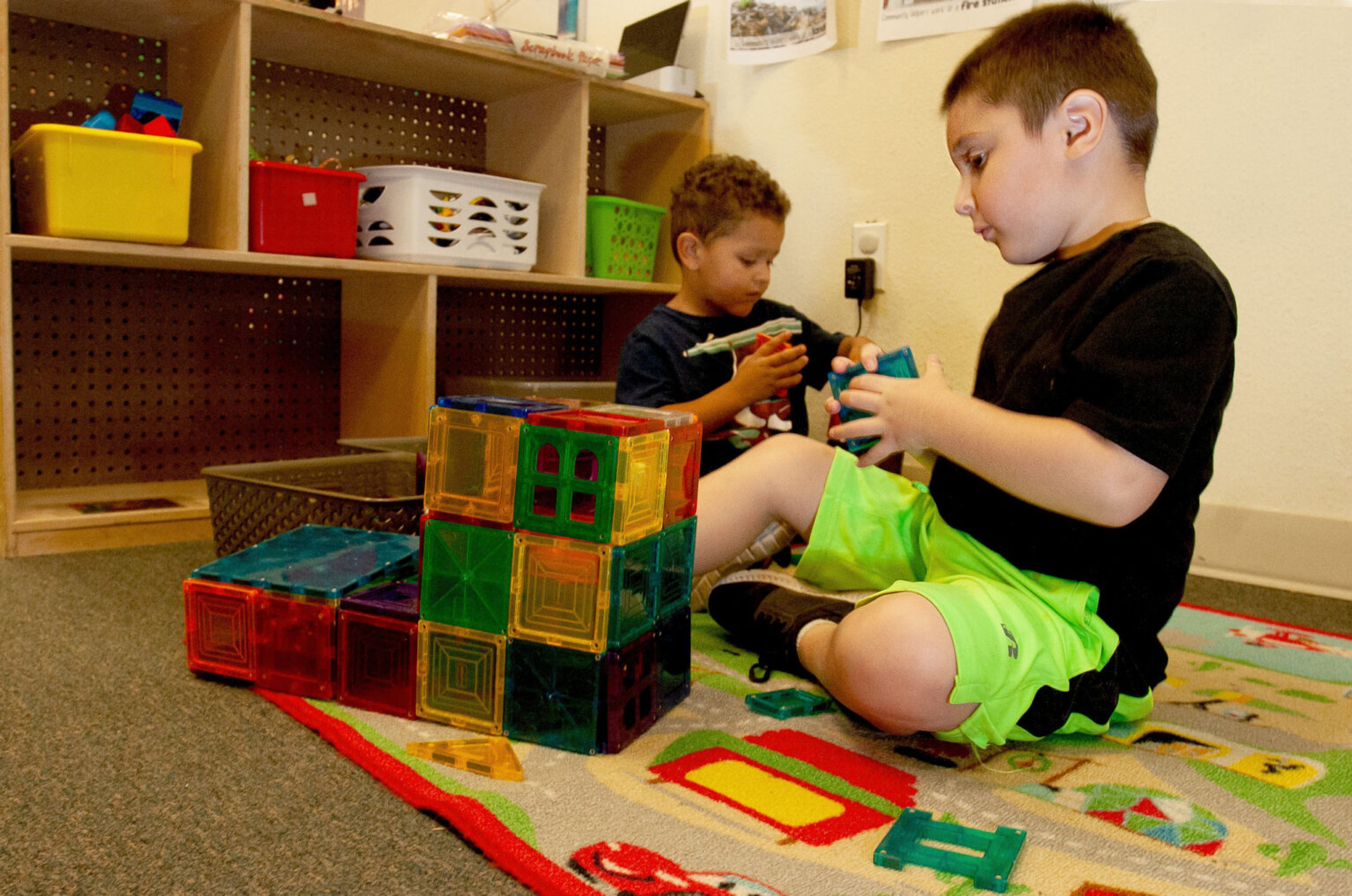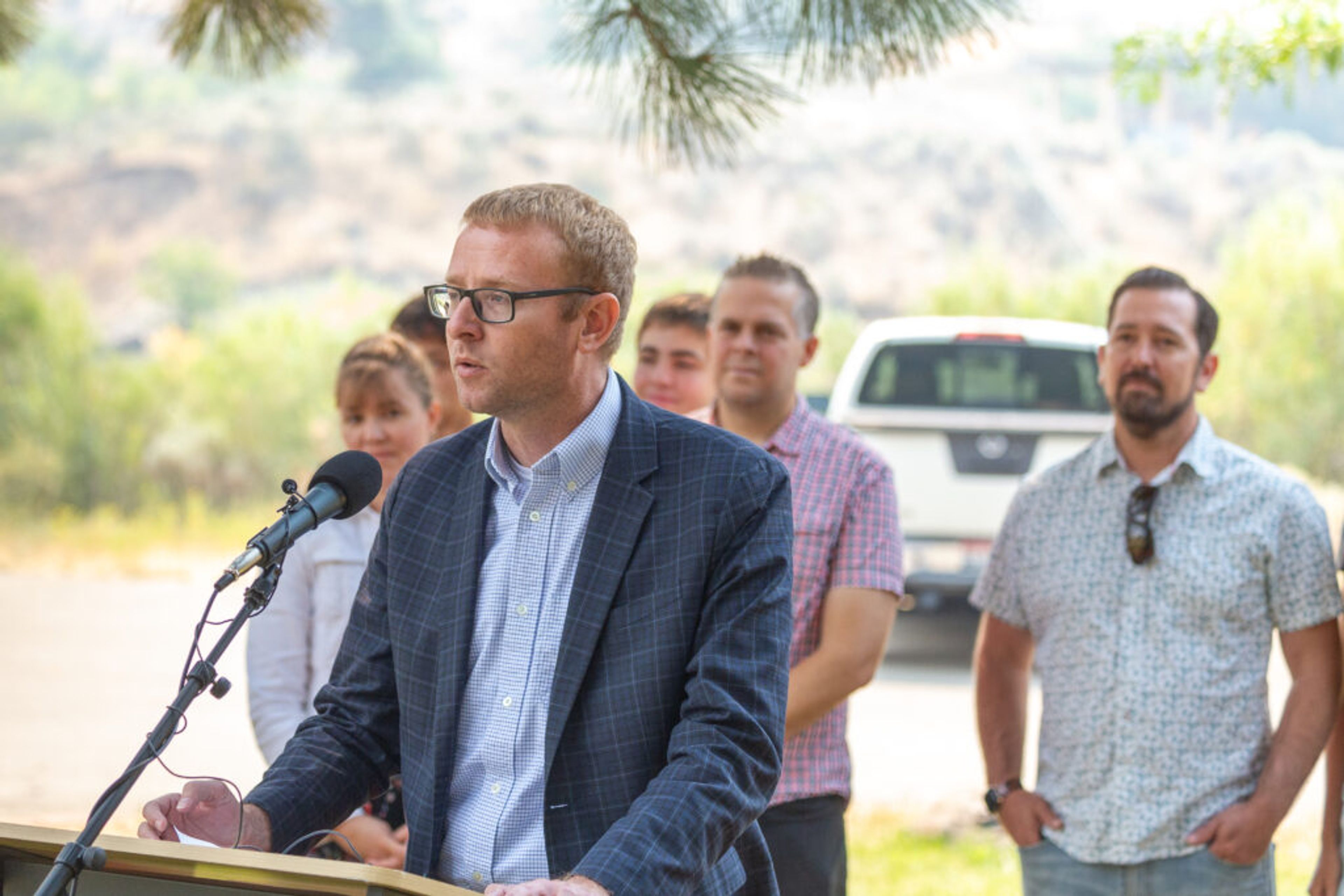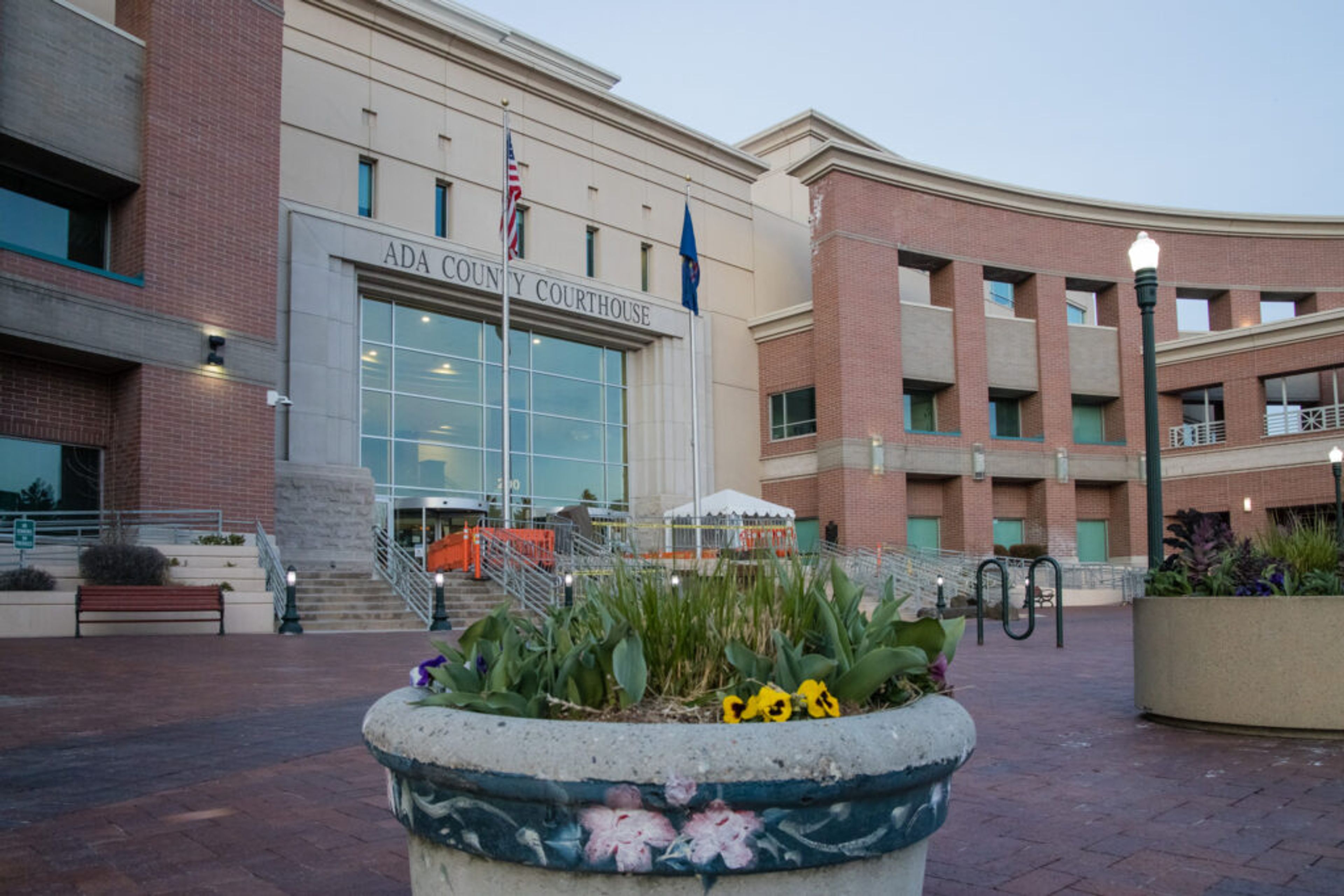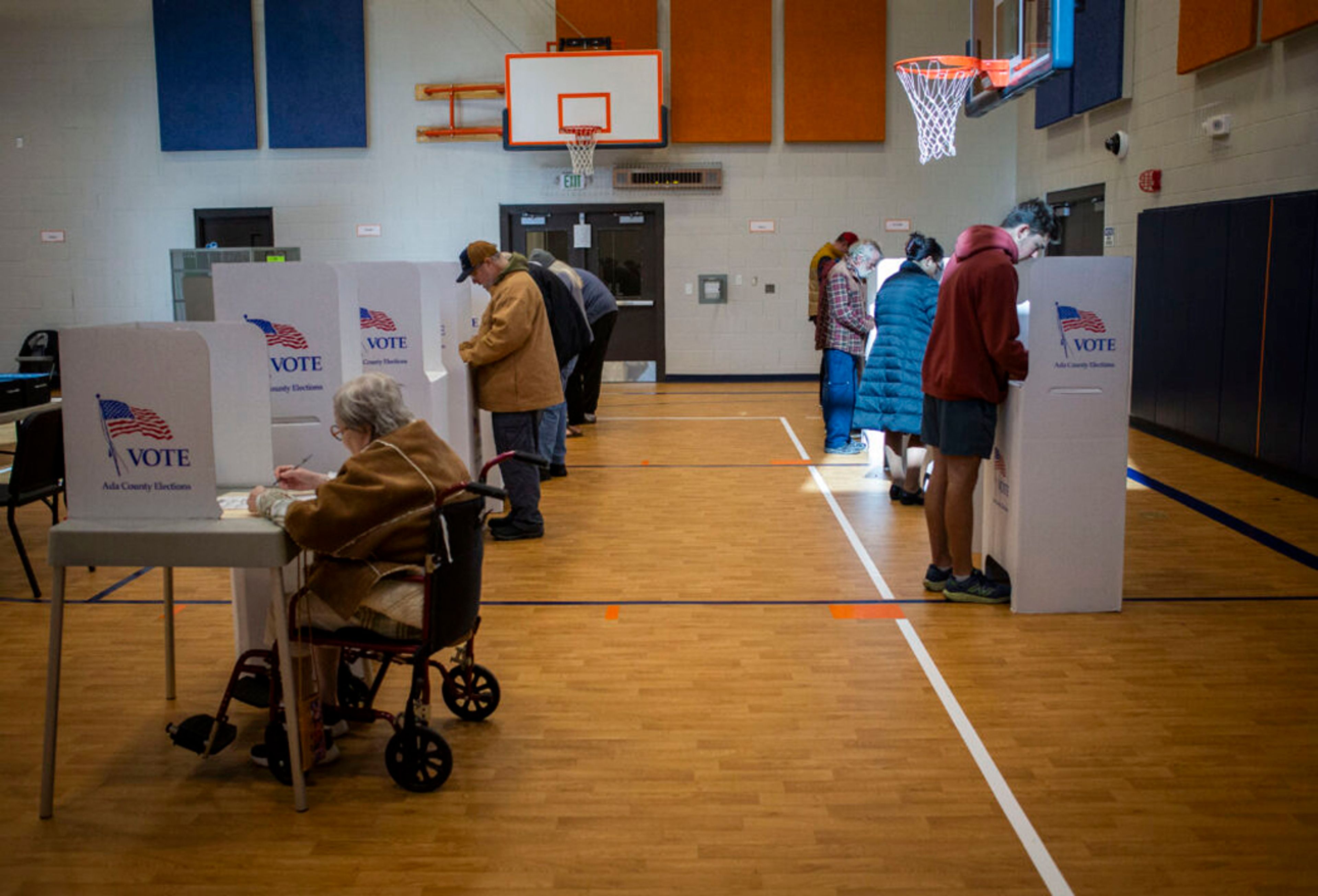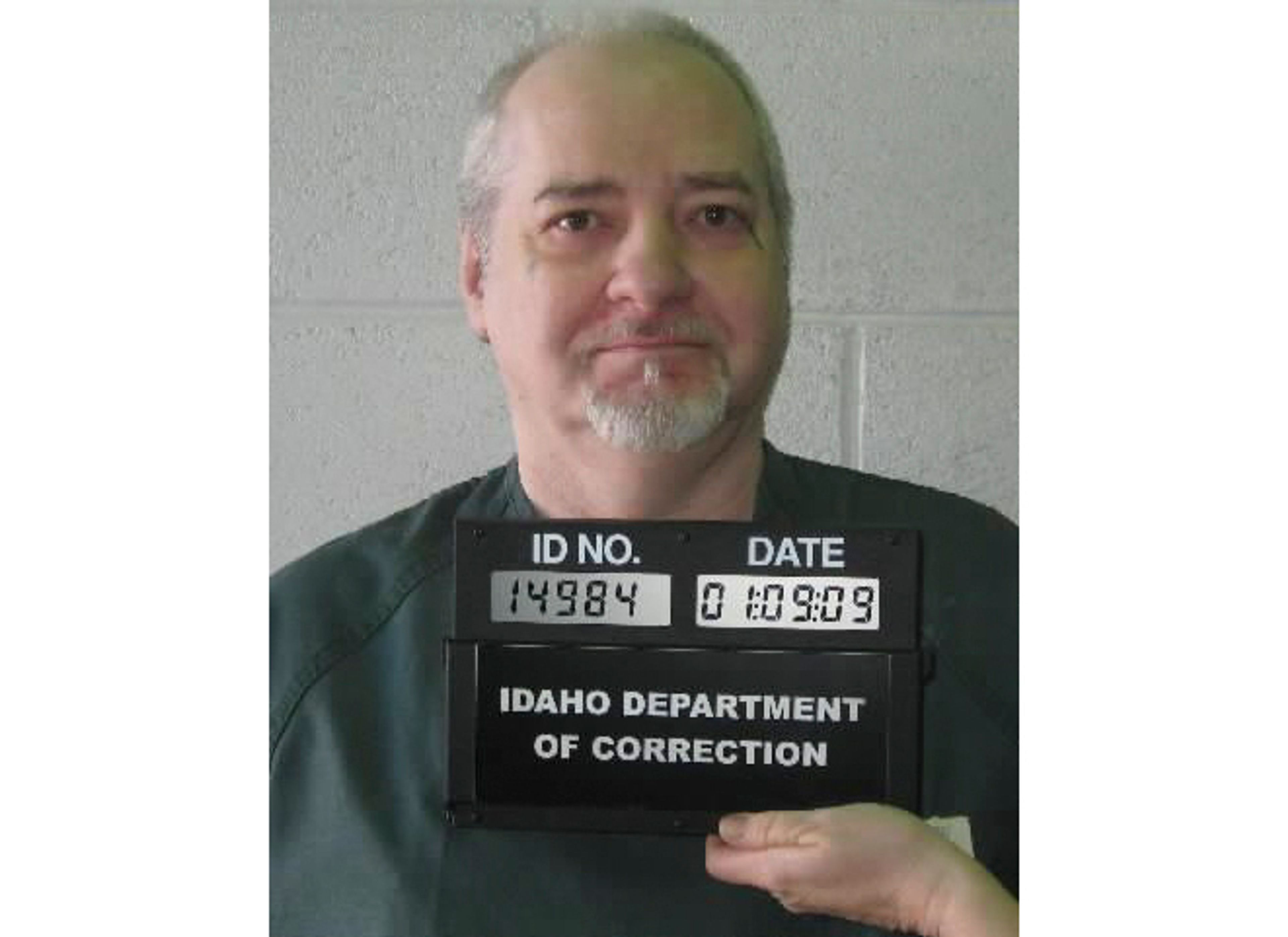Lessons from the heart
Downtown revitalization efforts in several cities in the Northwest reflect their communities’ spirit
They’ve seen better days, these grand old downtowns.
Lewiston, Pullman, Colfax — almost every community in the region has its historic commercial avenue, an aging Main Street business district reflecting its youthful hopes and dreams.
For decades, a prosperous, vibrant Main Street was indicative of a prosperous, vibrant community. It was clear evidence that the town had a future, that here was a place visitors might want to call home.
Main Street was civic pride on full display.
But times have changed. Now, aging downtowns often serve as visual reminders of better days gone by. Their historic buildings point to a golden age of possibilities, while empty store fronts and deteriorating facades speak to the modern realities of displaced industries, online competition and changing consumer habits.
There is still reason for hope, though. Communities across the country have found ways to reverse this grim trajectory. They’ve repurposed historic buildings and attracted new generations of customers looking to escape the cookie-cutter mold of chain restaurants and big box retail stores.
Efforts are underway locally as well. Lewiston and Pullman, for example, are working to revitalize their downtown areas. Master plans are being written, associations are being formed, new investments are being made.
Main Street may have seen better days, but there’s life in those old bones.
“We’re not going to be the same as we once were, but I think we have a huge opportunity in front of us. It’s exciting,” said Pullman Chamber of Commerce Executive Director Marie Dymkoski.
Dymkoski helped create the Downtown Pullman Association, a volunteer group that’s just beginning discussions on how to transition the core business district into a more vibrant, people-oriented entertainment center.
The city recently hired BDS Planning and Urban Design, a Seattle-based consulting firm, to develop a master plan that will help guide the transition. It’s scheduled to be completed by February.
BDS also produced a master plan for Lewiston’s downtown area. The city council unanimously approved the document in July.
While working on that project, BDS founder Brian Scott suggested that two Oregon communities — Oregon City and McMinnville — might serve as examples of what can be achieved locally. Both towns are similar in size to Lewiston, and faced some of the same hurdles and opportunities.
So what lessons can be learned from their experiences? What were the keys to success, and what challenges remain? Here are some thoughts from people involved in those efforts:
The way we were
When Jeb Bladine was growing up in McMinnville in the 1950s and ‘60s, Third Street was the commercial heart of what was then a prosperous agricultural community.
The downtown core had a number of attractive, older buildings, many of which had been built prior to the Great Depression. A variety of businesses catered to local needs. City and county offices were located just a block or two away.
It was, Bladine recalled, “a strong middle-class downtown.”
“There were no trees, and lots of parking,” he said. “And it was quiet. Nothing happened after 5 p.m. on weekdays, or on the weekends.”
Bladine is the third-generation owner of the Yamhill Valley News-Register, McMinnville’s local newspaper. He served as editor for 40 years, beginning in 1974.
That was about the time downtown McMinnville began its slow decline. After a decade of shopping center development in outlying areas, J.C. Penney moved out and other businesses followed. Third Street bordered on irrelevancy.
“By the mid-1980s, there was a significant vacancy rate downtown — 20 to 25 percent on the ground floor and probably 50 to 60 percent on the upper floors,” Bladine said. “There were a lot of concerned property owners.”
Brian Scott, who worked with Bladine on McMinnville’s revitalization efforts, said similar changes took place across the region.
“In a lot of smaller communities, downtown was the primary shopping center for generations, probably into the 1970s and ‘80s,” he said. “I started doing downtown revitalization work in Oregon in 1984, and over the next 10 years J.C. Penney closed virtually all of its small downtown stores across the state. In some places they relocated to the mall; in others they just closed entirely.”
The good news for Lewiston and Pullman is that they’re in somewhat better shape. Dymkoski noted that there are only about five empty spaces in Pullman’s core business district. Courtney Kramer, executive director of Beautiful Downtown Lewiston, estimates that the vacancy rate between First and 13th streets is about 17 percent — down from 24 percent in 2017.
Both communities, however, have a long way to go to achieve the success that McMinnville has seen.
Third Street today is a picture of economic health and vitality. Commercial vacancies are less than 4 percent. There’s been significant new construction, as well as multimillion dollar renovation projects. Retail stores are busy throughout the day, and restaurants are jammed late into the evening.
“It’s astonishing,” Bladine said. “There’s been a quantum change in the amount of activity, both in traffic and people. You go downtown at 8 p.m. and you can’t find a parking space. It’s just busy.”
Road to recovery
The starting point for McMinnville’s turnaround was the creation of a downtown business association in 1986.
The move coincided with the formation of Oregon’s first economic improvement district — a special taxing district approved by a majority of the downtown property owners that generated the funding to hire a full-time association director.
“That was a key move,” Bladine said. “Now we had a full-time manager and a super-focused board of (volunteer) directors.”
Tayler Brisbin, communications and events manager for the McMinnville Downtown Association, said the association takes a multi-pronged approach to addressing the district’s needs.
For example, it promotes a full slate of downtown events, including a monthly wine and arts celebration, weekly farmers market and a summer concert series. There’s also a Christmas parade and Halloween trick-or-treat night.
Combined with other community events, such as the annual UFO Festival, it gives the impression of constant change and excitement. There’s a sense that something new is always happening downtown.
The association also works to recruit new businesses that complement the downtown mix, and it coordinates with the city on infrastructure improvements and design standards.
However, it was the rapid growth of Oregon’s wine industry that really gave impetus to McMinnville’s revitalization effort. With more than 600 vineyards now located within easy driving distance, the town bills itself as capital of the Willamette Valley wine region.
The core business district does all it can to live up to that claim. At least a dozen wine-tasting rooms have opened there. Step into any art gallery or gift shop and you’re likely to be offered a glass of wine to sample while you browse.
You’ll also find slick brochures with maps and information about the area, in case you were thinking about relocating.
And plenty of people are looking. The wineries attract tourists from around the country, which helps support a wide assortment of downtown restaurants, specialty retailers and other businesses.
As the city’s reputation as a tourist destination bloomed, Third Street began to attract new investments. Chief among those was the 1998 renovation of the nearly 100-year-old Oregon Hotel property by McMenamins, a Portland-based brewery and hotel firm. That spurred additional renovation of historic buildings all throughout the district, as well as new construction — projects that continue to this day.
Last year, for example, the four-story Atticus Hotel opened a block off Third Street. Offering “luxury boutique lodging,” it charges more than $300 per night for its 36 rooms. Initial estimates suggest the business could pay more than $200,000 in annual lodging taxes, and that its patrons may spend upwards of $2 million per year in and around McMinnville.
“Tourism isn’t just people walking around sightseeing,” said Kitri McGuire, marketing manager for Visit McMinnville. “It’s economic development.”
Local appeal
While the emphasis on tourism has worked well for McMinnville, it won’t be the initial focus in Lewiston. Instead, the city’s new master plan recommends growing the number of residential units downtown, to expand the local customer base.
“A strong downtown economy depends on day-in, day-out foot traffic from locals,” said Kramer at Beautiful Downtown Lewiston. “Tourism is the frosting on the cake.”
Oregon City also launched its revitalization efforts with an appeal toward local residents.
As the last official stop on the Oregon Trail, Oregon City was the first town west of the Rocky Mountains to be incorporated. It’s located on the Willamette River, adjacent to Willamette Falls, and has long been home to a variety of lumber and paper mills.
“It was a blue-collar town for 150 years,” said Liz Hannum, executive director of the Downtown Oregon City Association.
Its historic business district is very small — only a block or two wide and about six blocks long. It’s jammed between a railroad track and high bluff on one side, a highway and the river on the other, and the former Blue Heron Paper Company mill on the south.
At its peak, the mill employed about 2,000 people. Downtown businesses catered to the workers. That included a number of dive bars, Hannum said, so local residents often avoided the area.
“Lots of drunk guys falling off bar stools — that was the description,” she said.
The mill began cutting wages and benefits in 2000. Layoffs followed, and it closed for good in 2011. By the time the downtown association formed in 2009 — at the height of the last recession — vacancies in the downtown core topped 30 percent.
During its first few years, the association focused on improving the appearance of the downtown core, making it more inviting for locals and visitors alike. It secured grants for facade improvements, and also worked with the city on a major streetscape project.
One consequence of the streetscape project, Hannum said, was a near-total turnover in the downtown economy.
“Most of the dive bars didn’t make it through the renovation,” she said. “They weren’t strong businesses to begin with. Construction took out Main Street for almost a year. People weren’t able to get to (the bars), so they just didn’t come.”
Bars and empty spaces have since been replaced by more than a dozen inviting coffee shops, restaurants and micro-breweries, as well as multiple specialty retail shops.
“Now we feel like we have a brand,” Hannum said. “Most of our buildings have been renovated in the last 10 years. We’re doing good.”
Time to pay the piper
While local volunteers are critical to community revitalization efforts, Scott said someone should really be dedicated to the job full time. That means having a revenue stream.
“The most effective way to change a downtown is to rally the businesses in a cohesive direction,” he said. “Managing the area like a shopping center is a fundamental and ongoing (revitalization) strategy. That doesn’t mean controlling everything the businesses do, but you want them rowing in the same general direction most of the time. And it’s essential that you have one individual who is completely committed to that.”
In McMinnville, property owners initially paid for the downtown association director themselves. That special assessment now generates $60,000 per year, which provides about a quarter of the association budget. The remainder comes from a mix of grant administration, event management, business member dues and sponsorships.
The improvement district needs to be renewed every three years. If a third of the property owners object, the district sunsets. McMinnville’s was just renewed for an 11th consecutive term this year.
Five years ago, the city council also implemented a 10 percent local lodging tax that now provides around $850,000 per year for Visit McMinnville’s marketing efforts.
At about the same time, the city created an urban renewal district that covers a portion of Third Street, as well as several blocks to the north and northeast.
Bladine said the district generates about $100,000 per year in tax increment funding for infrastructure improvements and developer incentives. However, with all the high-end projects that have taken place in recent years, that could soon increase to as much as $500,000.
“In the next few years, we’ll have the financing for a major bond, so we can do a really large project,” he said. “That’s what we’re studying now: Do we want to replace the trees downtown, do a big streetscape project, build an underground parking garage? It’s all on the table.”
Beautiful Downtown Lewiston has also advocated for the formation of a business improvement district. If enough property owners support the move and it’s approved by the city council, it could help fund implementation of the new master plan and accelerate revitalization efforts.
Dymkoski said the idea of a business improvement district has been a topic of conversation in Pullman as well, but no action has been taken. To date, its downtown association relies primarily on volunteers, with assistance from a part-time coordinator funded through the office of Washington State University President Kirk Schulz.
Opportunity abounds
As a fourth-generation McMinnville native, Chelsey Nichol has watched the downtown transformation with conflicting emotions.
On the one hand, she’s seen it shift from businesses geared toward serving community members to those that increasingly cater to tourists. Prices have gone up, parking is more difficult. At times, she wonders if locals still have a place there.
“Third Street’s essential character as the heart of the community has stayed the same,” Nichol said. “But over the last 30 years there’s been a definite shift — and there are differing opinions about whether that’s been a good or bad thing.”
As a young entrepreneur and business owner, however, her enthusiasm for the changes is unqualified.
“I see it as a positive for business, for sure,” she said. “There’s just so much opportunity here, and the local business community is very supportive of each other.”
Nichol. who is newspaper Publisher Bladine’s daughter, owns Type A Press, a custom print shop located a block off Third Street. She also serves on the McMinnville Downtown Association board of directors.
She finds great value in the association’s efforts to organize different events and bring more people downtown. She also appreciates having an entity in place that focuses exclusively on the needs of the core business district.
For her, though, McMinnville’s story is more about people than about the programs they put in place.
“If a downtown association is successful, it’s because they find the right leadership,” Nichol said. “They have to be able to form strategic partnerships. They have to know what’s going on downtown and be able to positively maintain relationships. At our best, we’ve been successful when we’ve had that kind of leadership.”
As was the case 100 years ago, a vibrant, prosperous downtown says more about the community than it does about any particular business located there. And it will be the community, not programs or incentives, who revitalize them.
“The hands-off approach doesn’t work,” said McGuire at Visit McMinnville. “There is always a need for charismatic leaders who view things in terms of opportunity, and who aren’t dissuaded by fear.”
———
Spence may be contacted at bspence@lmtribune.com or (208) 791-9168.
This is the first of two stories examining the issue of downtown revitalization.
Next Sunday, the Tribune looks at how Moscow succeeds while dancing to its own tune.
